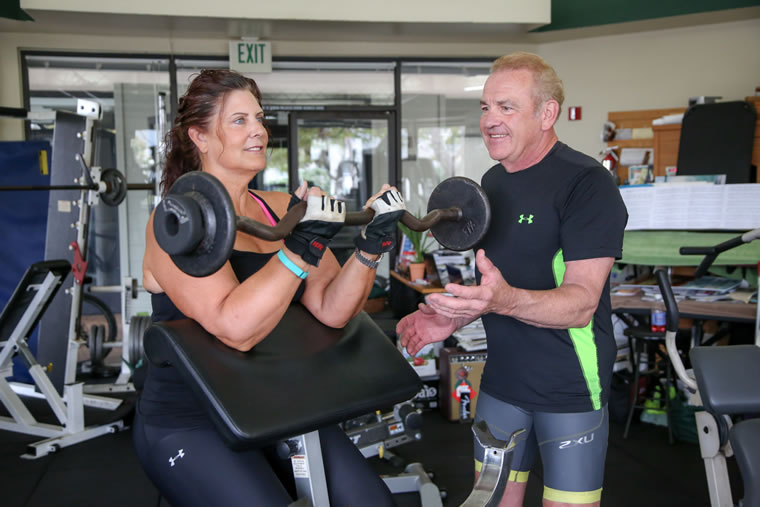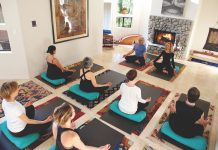
Dr. Jack Lynn may be 65 years old, but his physique could pass for two decades younger. With muscle tone even 20-year-olds would envy, he knows a thing or two about the human body—specifically, how to keep it healthy and active at any age.
Since 2004, Jack (who obtained his postgraduate degree from the University of Pittsburgh School of Dental Medicine) has passed on his knowledge to others—particularly those over the age of 50—at Time Defiance Fitness, located on Broadway. With a three-fold approach that includes physical exercise, emotional support and nutritional guidance, the company’s age-targeted programs aim at attaining “vitality for a lifetime.” Jack’s A2R3OM (Age Adjusted Rate Repetition and Range of Motion) technique, in particular, helps develop increased lean body mass and bone density.
Laguna Beach Magazine spoke to Jack about his approach to staying fit after 50, and how aging adults can reach their health goals through fitness and nutrition.
Laguna Beach Magazine: How often should adults exercise?
Jack Lynn: I’ve always said you should exercise only on those days you eat. If you pumped gas into your car every day but didn’t drive it daily, then the gas tank would overflow and you would have to add another tank or just waste the gas as it poured onto the ground. In our human species, our physiology just adds another layer of fat, which is our “spare” or “reserve” gas tank.
How should someone over 50 years old exercise differently?
JL: I tend to advise the 50-and-over crowd to add repetitions and reduce weight. However, I have developed the A2R3OM technique: To safely increase muscle, tendon, ligament and joint strength, as the weight increases, the range of motion and number of repetitions decrease. Also, the rate of repetitions is about one repetition every one-and-a-half to two seconds.
Do you have a general rule for diet?
JL: A food is OK to eat as long as it grows, walks, swims or flies—and isn’t processed. There are so many diet and nutritional programs, books and philosophies, that moving toward a simplified approach makes it much easier for people to follow without being confusing.
What percentage of an exercise program should be focused on strength and balance versus aerobic training? Does this change with age?
JL: There should be a balance in the time spent doing each type of training. I believe that after 50, all training programs should include balance training. In general, three to four resistance and balance training sessions, and three to four aerobic sessions are adequate per week. Resistance sessions last from 45 minutes to one-and-a-half hours, and aerobic sessions about 25 to 40 minutes.
What is the most common or important piece of advice that you give your clients?
JL: I usually explain to them that if they stay in the game long enough, the health benefits are numerous in fighting all types of chronic and other diseases and injuries. Also, if they maintain an excellent physical condition, they minimize the amount of medications they will be prescribed and maximize the long-term normal functioning of the brain.
What do you enjoy about your job?
JL: The best thing is watching people who have been given little or no hope of healing from accidents, organic diseases, et cetera, get their lives back and walk again, stand again, drive their own auto and become independent.
—Written by Larry Urish




